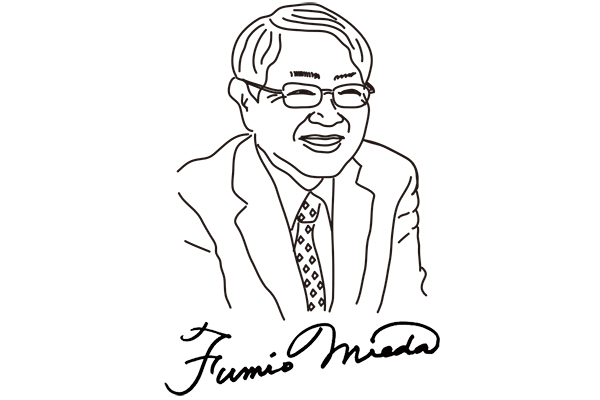
miniKORG 700FS
📦 Ships same day when ordered by 1pm PST. 🛍 Local pickup available daily. Contact us for more information. 💙
MiniKORG 700FS
a limited edition authentic revival of the miniKORG 700.
The miniKORG 700, released in 1973, widened access to synthesizers with its simple operations & extreme sound changes. It gained a loyal following of musicians.
The miniKORG 700FS is an authentic revival of the miniKORG 700S, (an improved version of the miniKORG 700) that was released the following year. The revised miniKORG 700FS offers added functionality such as an arpeggiator, spring reverb and aftertouch. The miniKORG 700FS is a fully-realized analog synthesizer that was developed in conjunction with the original designer, Fumio Mieda.





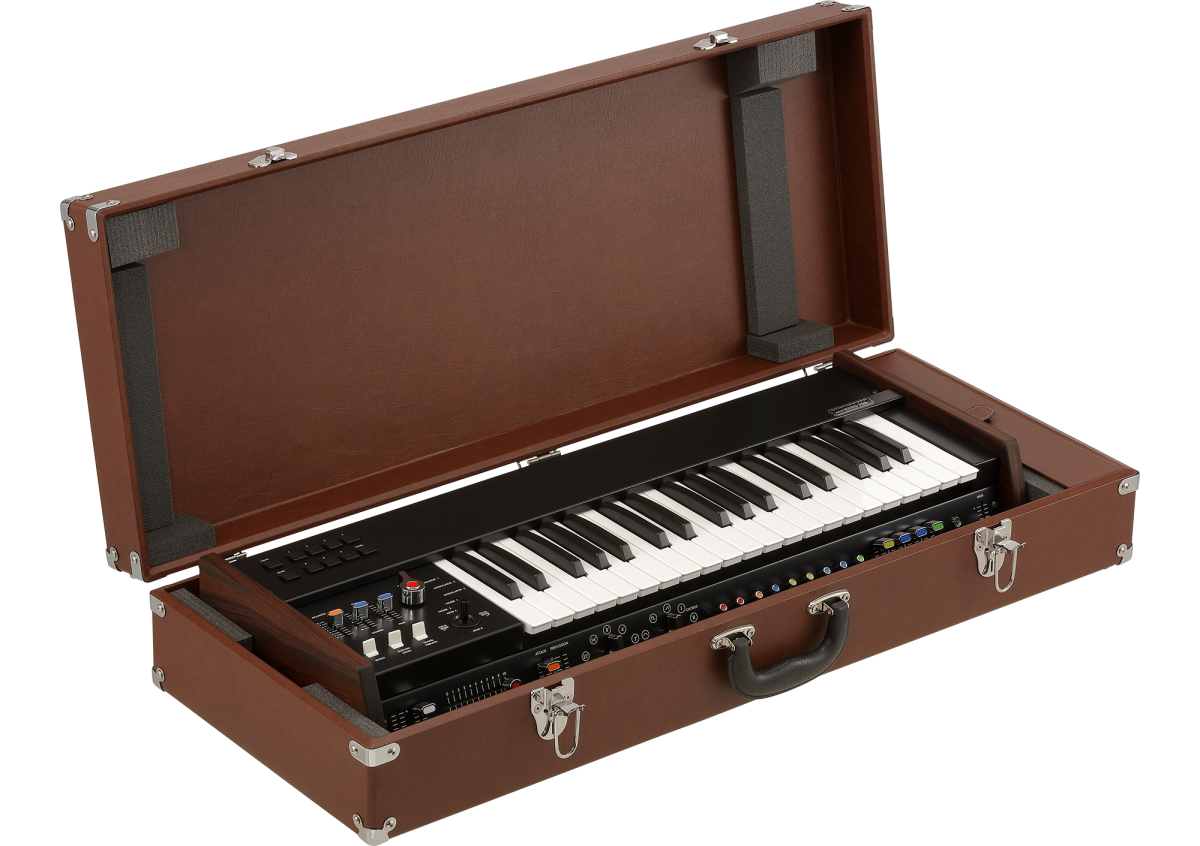
KITARO meets miniKORG 700FS (English sub-titles available)
Why revive the miniKORG 700 now?
The miniKORG 700FS, crafted by KORG analog engineers with Fumio Mieda's supervision, surpasses analog modeling technology, despite KORG's production of analog synthesizers like the prologue and minilogue inspired by the miniKORG 700. After a decade of monotron, a KORG engineering and analog enthusiast product, their complete vision has been brought to fruition. We hope customers will gain a deeper appreciation for the true analog sound this product offers.

Beautiful synth leads, thick bass – and more
While the miniKORG 700 was KORG’s first synthesizer, it also produced some of the fattest and most dense sounds of all of our synthesizers. The miniKORG 700FS, features oscillators with a penetrating sound and an authentic recreation of the Traveler controller, one of the key features of the miniKORG 700.
The volca keys and volca bass use the filter circuit from the miniKORG 700, because the clear and penetrating characteristics of this filter were a perfect match for products that specialize in lead and bass synth sounds with a strong presence. The miniKORG 700 sound sits easily in today’s music, particularly with its lead and bass synth sounds.
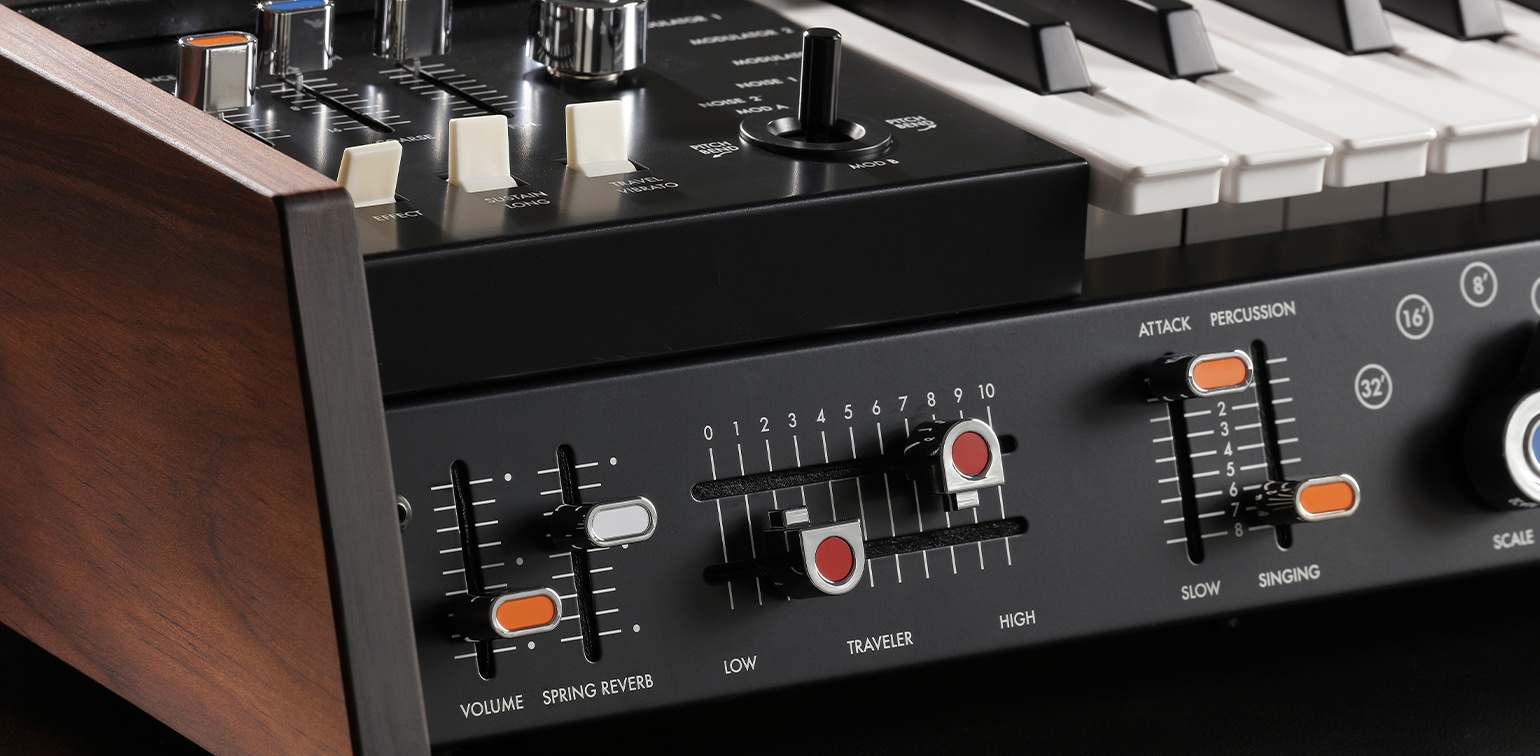
The possibilities as a sub keyboard
The miniKORG 700's layout - with controls beneath the keys - made it easily accessible for players setting it atop organs in the 70s. Intuitive and distinct today, no other instrument offers the same look.

Functionality we added to the original
When the miniKORG 700 was originally released, electronic components were larger in size, limiting its functionality due to the small space inside. Thanks to changes in technology, we now have more space to add a spring reverb effect as well as a joystick for pitch bend and modulation. The new version also features aftertouch for added expressiveness, as well as important features an arpeggiator, USB port, MIDI IN connector and a CV/GATE IN jack.
We’ve also added a memory program button, so there’s no need for players to write down the positions of the knobs and levers to recreate their favorite sounds.

Traveler controller
The miniKORG 700 had two sliders below its keyboard; the upper changed its low-pass filter, and the lower adjusted the high-pass filter. This enabled wah-wah and muted sounds, as well as the classic “traveling” sound, through manipulation of the levers. With analog circuitry, optimal filter characteristics couldn't be achieved, so many players altered the protrusions of the levers, producing unique sounds. In contrast, the miniKORG 700FS has no protrusions, permitting users to mimic the vintage audio.

A second oscillator
The miniKORG 700S, released 1974, had an added controller and featured two oscillators, a ring modulator, detune and thick lead synth sounds. The FS model is a revival of the 700S, featuring the same expanded functionality.

Includes a hard case made especially for the miniKORG 700FS
To commemorate the revival of the miniKORG after nearly half a century, we are including a hard case with our limited edition miniKORG 700FS, designed especially for this product.
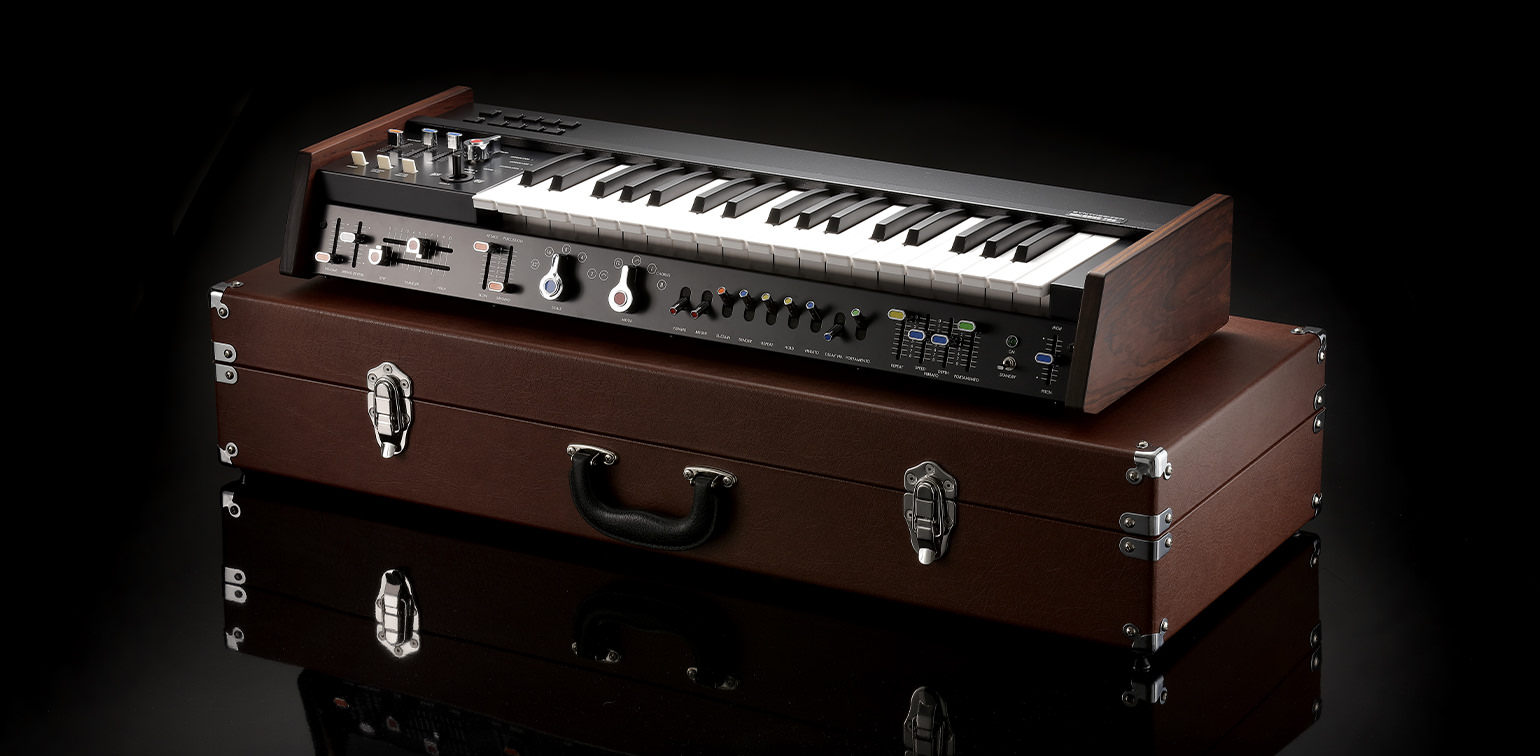
Free music software bundle
The miniKORG 700FS comes with software such as "Ozone Elements," "Skoove," and "Reason Lite" to bring your music to the next level.

Reminiscing about the miniKORG 700 - Fumio Mieda (Original developer of miniKORG 700S)
The production of the miniKORG 700S had to proceed in a roundabout way after the initial prototype was created.
We made an announcement regarding the very first synthesizer created in Japan at the 19th All Japan Audio Fair on November 12, 1970. It was 50 years ago. This instrument, the theme of which was "innovative organ", was a 2-stage keyboard instrument, and equipped with two units: the organ section of the polyphonic sound source, and what is now called the monophonic synthesizer section. It is known as the "first prototype" in our company.
I thought about two directions to commercialize this prototype. I contemplated whether to make it a polyphonic organ product or a monophonic instrument that can only create one sound at a time but can significantly change the timbre. I could not foresee that the era of synthesizers would arrive, therefore, I dropped the monophonic synthesizer characteristic and marketed this product as a combo organ with a "Traveler" manual filter attached to the polyphonic sound source. This was the “Korgue” organ (or the “Decakorgue,” as we called it) that was sold at the time under our previous company name, “Keio Electronic Laboratories,” which eventually led to our existing company name, KORG.
This was our first keyboard instrument; however, it did not sell well despite the hard work the founder Tsutomu Kato put into it because, being expensive, a distribution network had yet to be developed. However, when American buyers saw the prototype of the miniKORG 700/700S they placed surprisingly large orders. Three or four years had passed since the first prototype was released. We traveled a lot of extra distance to get where we were.
This instrument was completely different from other companies' products in terms of its appearance, specifications, and internal electronic circuits. The reason for this was that we did not want to imitate western synthesizers.
First of all, the purpose of use was different. During the design process, we assumed that this instrument was to be used as the third keyboard placed on an electronic organ, not as a solo instrument.
Therefore, we thought about the specifications and layout with a focus on ease of understanding and operation for organists. The operation panel had to be under the keyboard for organists to be able to easily reach it. The frequently used octaves and waveforms selection switch knobs were given special shapes so that they could be recognized and switched instantly. For players who were touching a synthesizer for the first time, we also devised a system that ensured that the sound would not be lost regardless of what operation was performed.
For example, a mechanical restriction was applied to the two knobs of the Traveler so that one knob's function did not overtake the function of the other one. I thought that this was a good idea, however, this restriction was removed from some models in order to satisfy a request from musicians overseas to widen the variable range. This reintroduced model includes two types of knobs: one with the restriction added and one without. Please try playing both models.
The "Traveler" function was installed in many of our products ranging from the first prototype, Korgue, and this miniKORG 700 series to the effectors. The name, "Traveler", signifies two travelers who travel back and forth on a long journey, and is used for the low-pass filter and high-pass filter knobs.
The control panel on the left side of the keyboard of the first prototype was equipped with a looooong Traveler with a special structure in which a knob moved back and forth on the same track. In the illustration, next to the Traveler, you can see a joystick for pitchbend, vowel switching buttons for A, I, U, E, and O, and some letters of "Reverb" in the upper column, which will be applied to the one after the next and subsequent products. This reintroduced model additionally provides a joystick and reverb that were abandoned in the 700s for miniaturization purposes.
The pitch of a general synthesizer at that time was very unstable, so when we built the original miniKORG 700 we followed the same Hz/Volt system as the first prototype. Speaking of how stable the pitch of miniKORG 700 was, this sound source circuit was also used for the world's first meter-type handy tuner, WT-10, which was released afterward.
The Hz/Volt system was developed by taking an idea from the principle of the attenuator of an electric measuring instrument; however, we had to additionally provide a separate converter to connect to instruments produced by other manufacturers that use the Oct/Volt system. This is a behind-the-scenes story that I can tell you now!
The number of knobs was minimized so that anyone could operate easily. The envelope generator was designed so that the sounds of most instruments could be generated using only two knobs: ATTACK and SINGING/PERCUSSION. This was not the ADSR system. After it was put on the market, some people in the industry commented that KORG's (Keio Giken at that time) synthesizers had unique specifications and function names that were different from those used for instruments marketed by other manufacturers, and that KORG should have matched them for standardization reasons. General names and functions were adopted in the synthesizer MS-20 that was released a few years later, however, this was a painful choice for me. I have always thought that musical instruments are interesting because each of them has individuality.
The miniKORG 700, miniKORG 700S, and 800DV are sibling models. The basic circuit of these models is the same. 700s is a 700 model with VCO added, and 800DV is a 700 model equipped with a double voice function. It was often said that this series had a deep sound. As a designer, I did not have any special know-how of how to produce a deep sound. However, when I look back, it rings a bell.
For example, the shape of the triangular wave that is used as the sound source may have been the reason. When I tried to make a cleaner waveform during my initial experiments, I repeatedly found that the sound was weak. A sound is sound. A sound is not a form of waves. I learned that I should not look into an oscilloscope to produce a clean waveform.
miniKORG 700S taught me what is important for a musical instrument creator – the sound.
Auditor, KORG INC.
miniKORG 700FS Development Supervision
Fumio Mieda
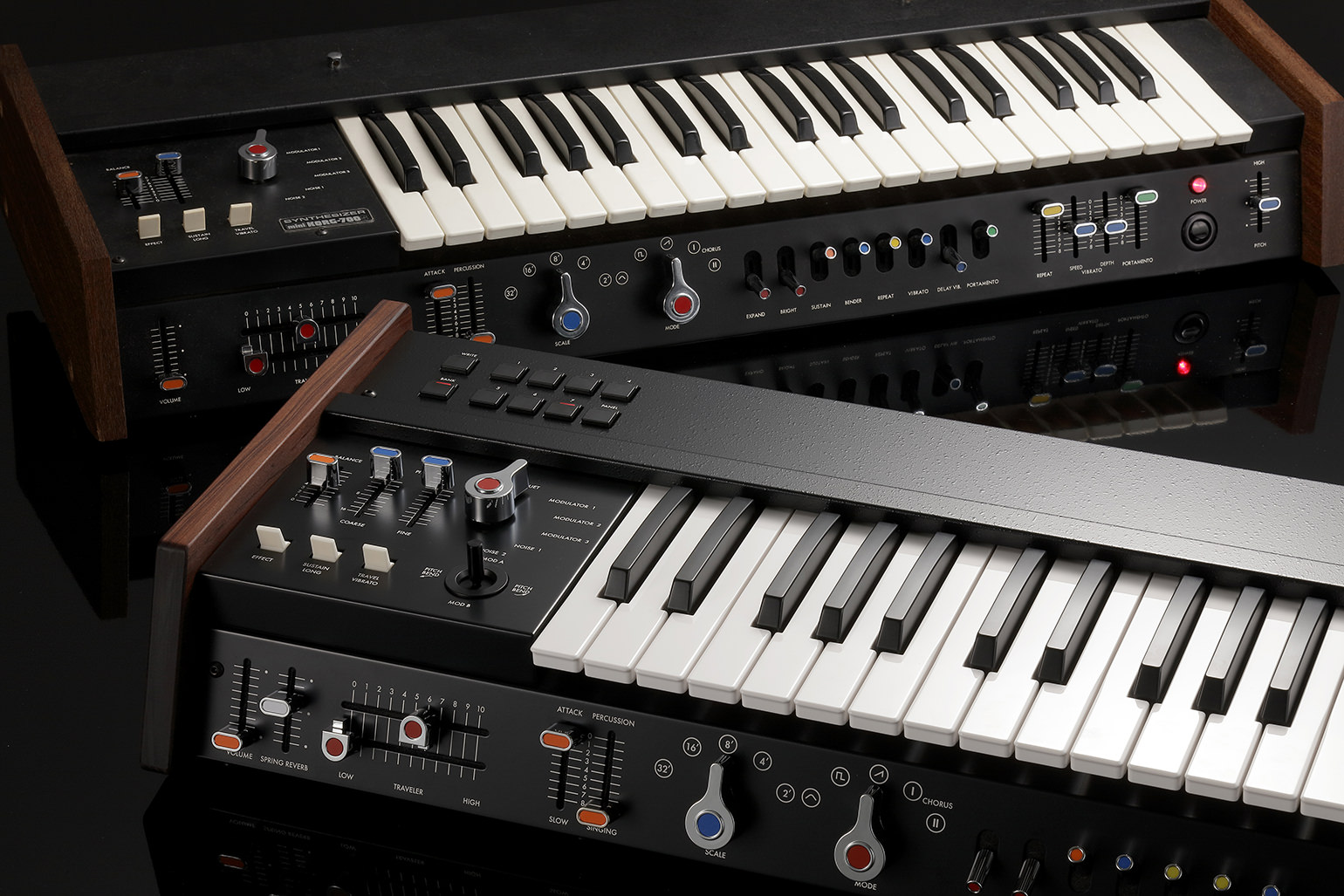 (Front) miniKORG 700FS, (Back) Original miniKORG 700S
(Front) miniKORG 700FS, (Back) Original miniKORG 700S
Specifications
- Keyboard
- 37 keys (with aftertouch, no velocity sensitivity)
- Range
- 7 octaves
- Waveform
- Triangle wave, Square wave, Sawtooth wave, Chorus I, Chorus II
- Programs
- 14
- Input
- USB connector (Type B), MIDI IN connector, SYNC IN and SYNC OUT jack (3.5mm monaural mini phone jack), CV IN and GATE IN jack (3.5mm monaural mini phone jack), AUDIO IN jack (6.3mm monaural phone jack, TS unbalanced)
- Output
- OUTPUT L/MONO and R jack (6.3mm stereo phone jack, TS unbalanced), Headphones jack (6.3mm stereo phone jack)
- Power supply
- AC adapter (DC 12V)
- Power consumption
- 9 W
- Dimensions (W x D x H)
- 744 x 280 x 122 mm/29.29” x 11.02” x 4.80”
- Weight
- 8.5 kg/18.74 lbs.
- Included items
- AC adapter, Traveler knob (without protrusions type) x 2, Hard case
- Accessories (sold separately)
- SQ-CABLE-6 (Patch Cable)








